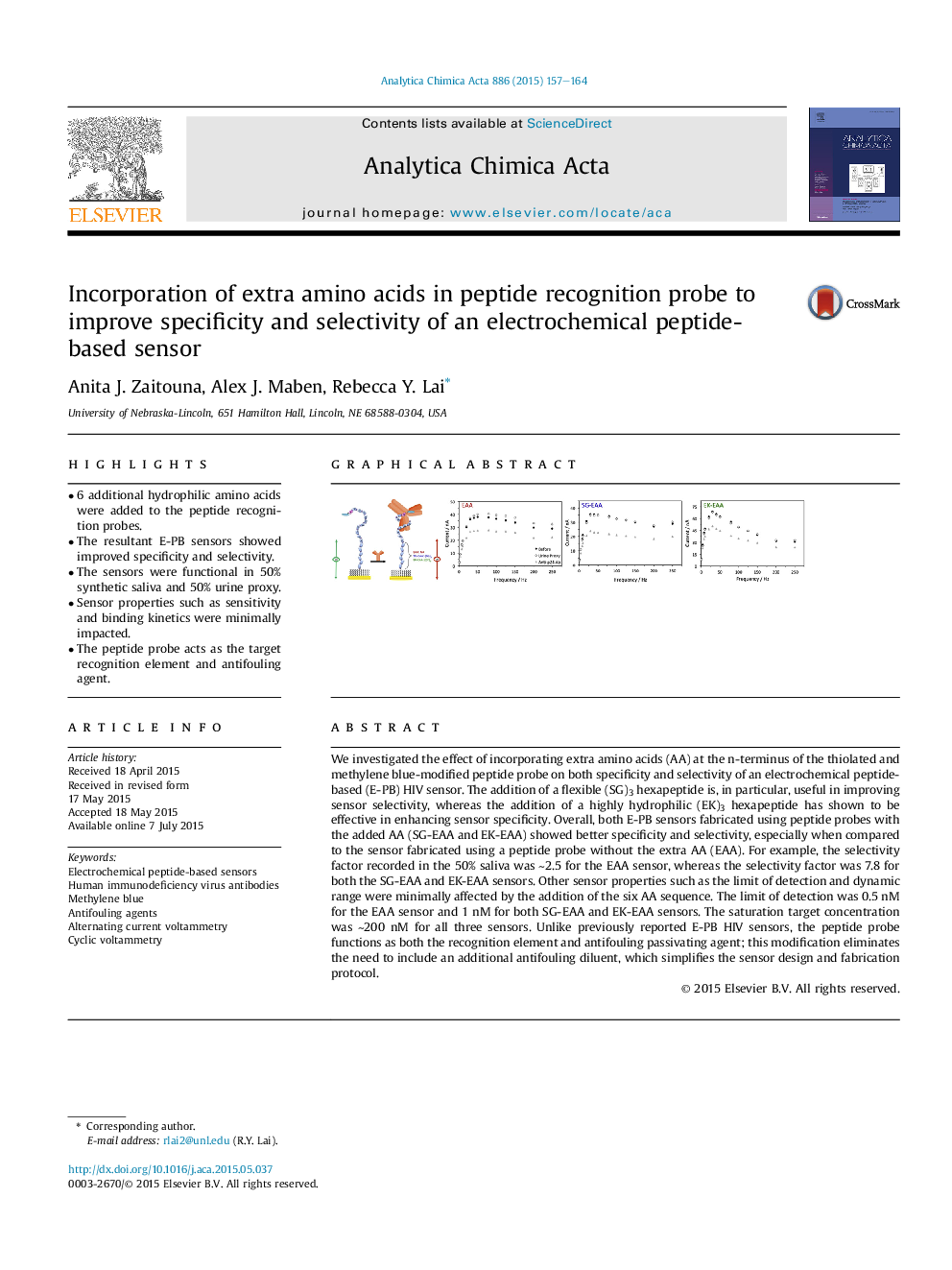| Article ID | Journal | Published Year | Pages | File Type |
|---|---|---|---|---|
| 1163738 | Analytica Chimica Acta | 2015 | 8 Pages |
•6 additional hydrophilic amino acids were added to the peptide recognition probes.•The resultant E-PB sensors showed improved specificity and selectivity.•The sensors were functional in 50% synthetic saliva and 50% urine proxy.•Sensor properties such as sensitivity and binding kinetics were minimally impacted.•The peptide probe acts as the target recognition element and antifouling agent.
We investigated the effect of incorporating extra amino acids (AA) at the n-terminus of the thiolated and methylene blue-modified peptide probe on both specificity and selectivity of an electrochemical peptide-based (E-PB) HIV sensor. The addition of a flexible (SG)3 hexapeptide is, in particular, useful in improving sensor selectivity, whereas the addition of a highly hydrophilic (EK)3 hexapeptide has shown to be effective in enhancing sensor specificity. Overall, both E-PB sensors fabricated using peptide probes with the added AA (SG-EAA and EK-EAA) showed better specificity and selectivity, especially when compared to the sensor fabricated using a peptide probe without the extra AA (EAA). For example, the selectivity factor recorded in the 50% saliva was ∼2.5 for the EAA sensor, whereas the selectivity factor was 7.8 for both the SG-EAA and EK-EAA sensors. Other sensor properties such as the limit of detection and dynamic range were minimally affected by the addition of the six AA sequence. The limit of detection was 0.5 nM for the EAA sensor and 1 nM for both SG-EAA and EK-EAA sensors. The saturation target concentration was ∼200 nM for all three sensors. Unlike previously reported E-PB HIV sensors, the peptide probe functions as both the recognition element and antifouling passivating agent; this modification eliminates the need to include an additional antifouling diluent, which simplifies the sensor design and fabrication protocol.
Graphical abstractFigure optionsDownload full-size imageDownload as PowerPoint slide
